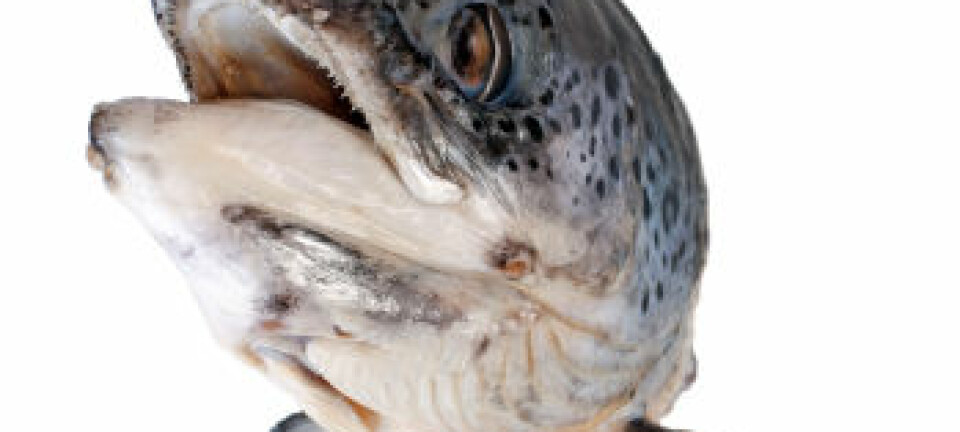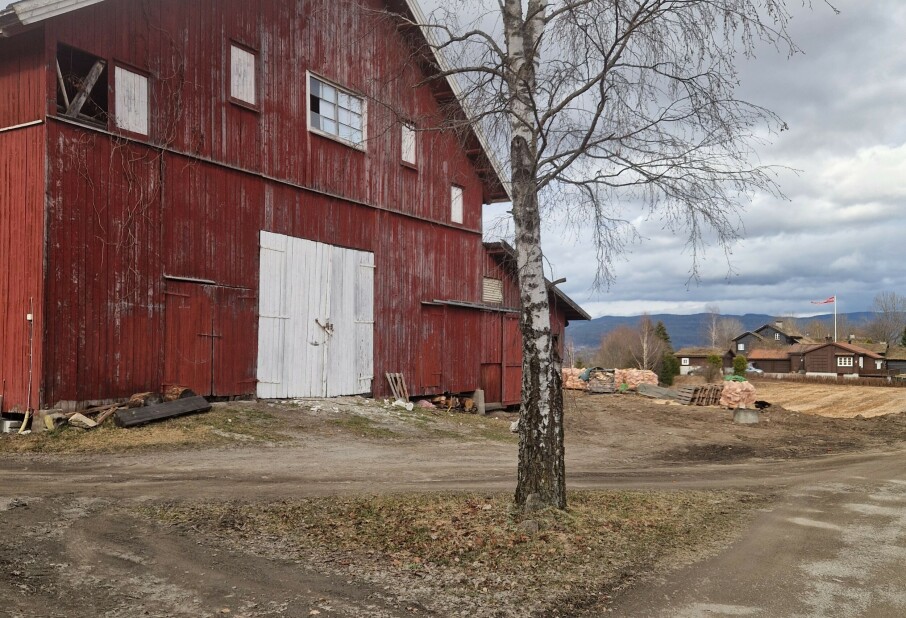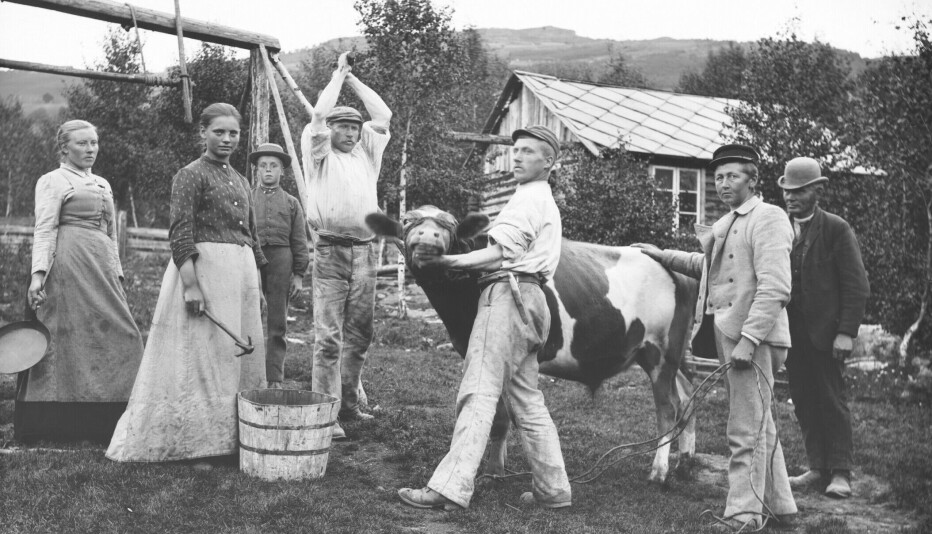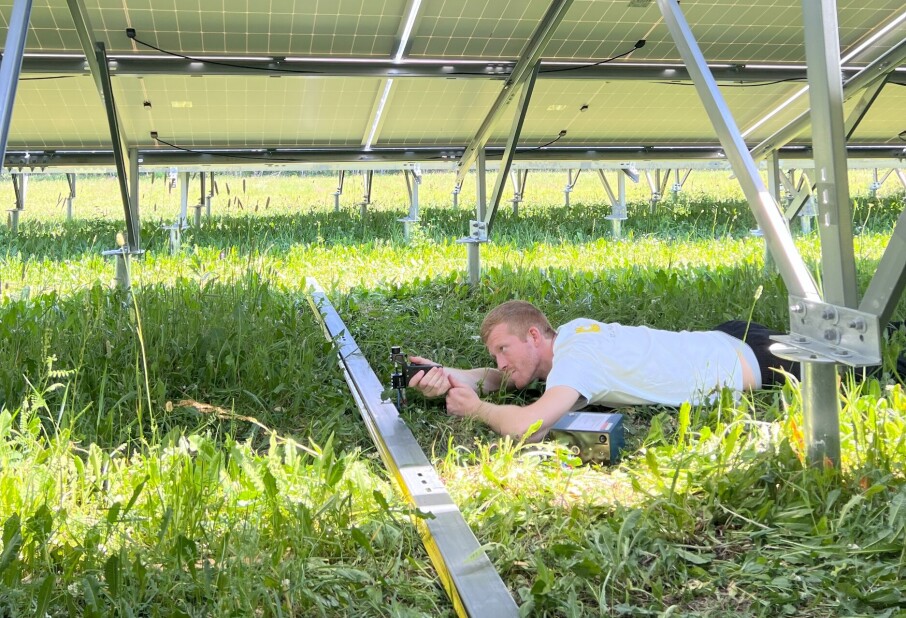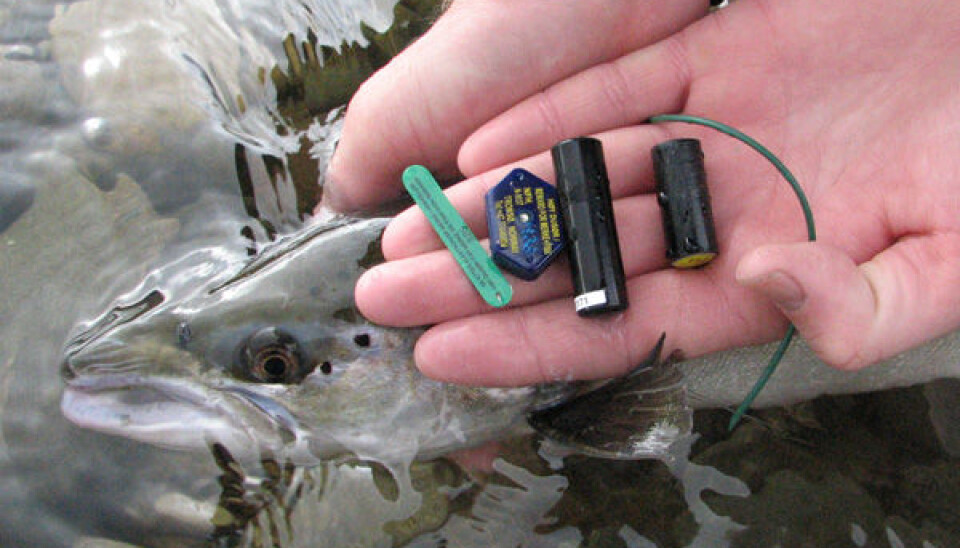
Old spawners important for salmon rivers
Super-veterans among salmon are keys to the survival of river stocks in hard times.
Denne artikkelen er over ti år gammel og kan inneholde utdatert informasjon.
Norwegian Atlantic salmon often survive their first spawns and some individuals return to their home rivers to reproduce year after year.
This is unusual in salmon circles.
The Pacific Ocean has a number of salmon species related to the Atlantic Salmo salar. As a rule, the Pacific salmon die after fighting their way up rivers to spawn for the first time.
Many have seen this on nature programmes on TV – the annual salmon migrations up rivers in Canada and Alaska followed by their deaths in droves.
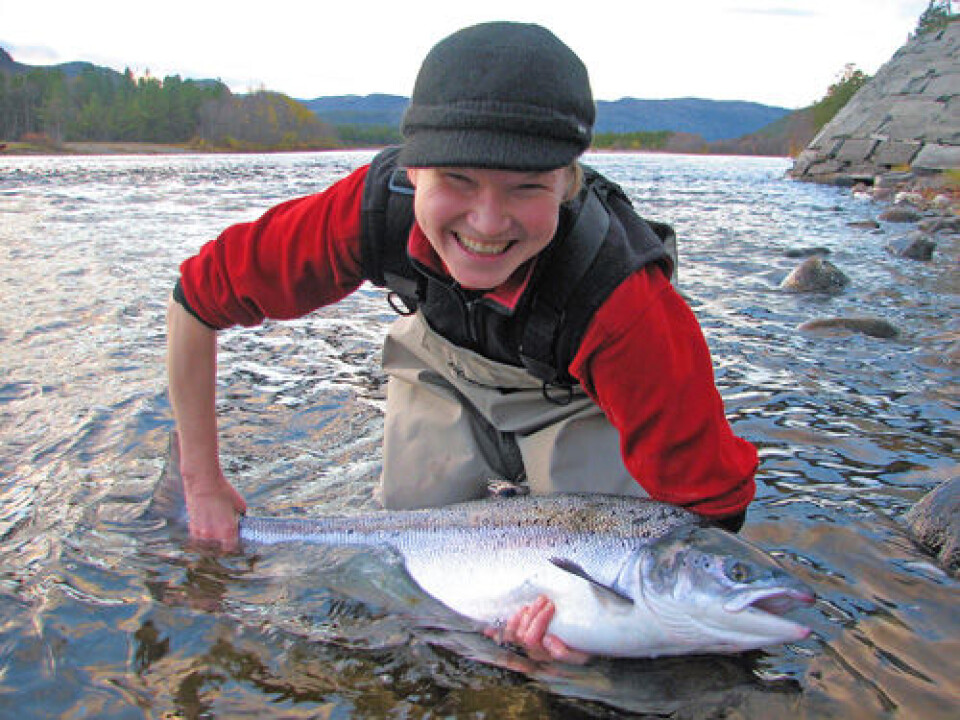
It is generally assumed the Atlantic salmon in the south of Europe die the same way after their first spawning voyage. It isn’t so in Northern Europe.
Multi-spawners
Biologist Elina Halttunen explains that salmon up north have been documented to spawn as many as six times.
She earned her doctorate at the University of Tromsø on salmon in one of Norway’s richest salmon rivers, the Alta River.
The super-veterans that spawn several times are important for the entire river stock. Older salmon are larger and have a better chance of spawning successfully.
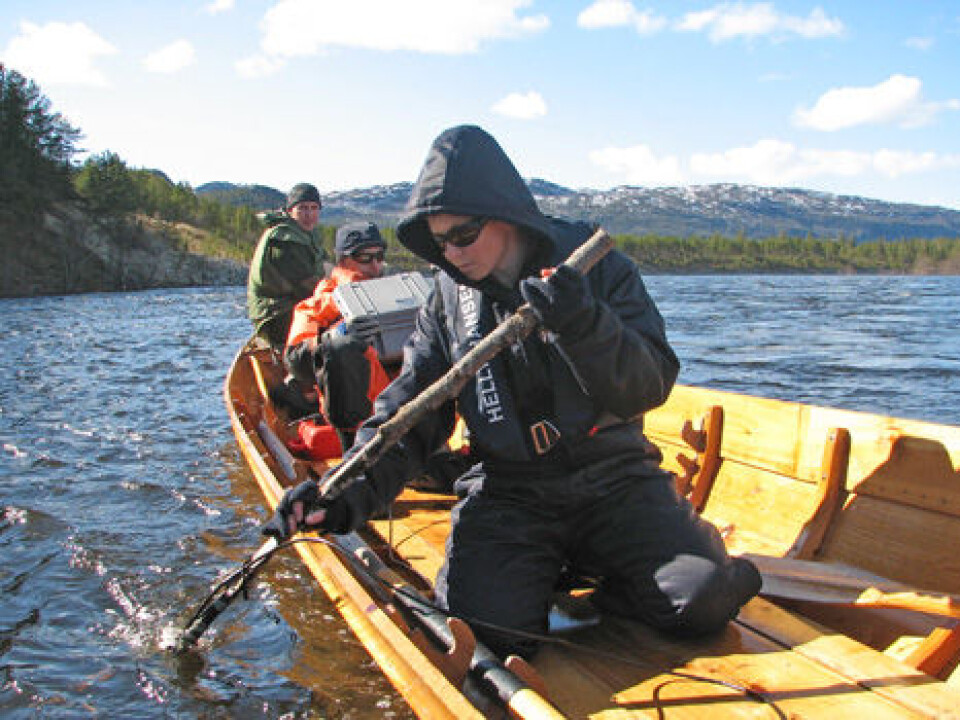
“The bigger the salmon, the more eggs it deposits. Its eggs might be larger too, which is salubrious because it provides fry with a larger food package,” says Halttunen.
The fecund older females contribute the most eggs and these are more likely to be fertilised because the older fish are sexier. Size matters here – larger salmon are more attractive.
Life insurance
The largest females are also more aggressive and capture the best spawning sites in the river. This too improves the chance of successful spawning.
“My study shows that repeat spawners represent a kind of life insurance policy for the salmon stock,” says Halttunen.
During years with a poor drift of maiden, first-time spawners, the veterans can save the day and fill the river with viable offspring.
Halttunen says the Alta River only needs 1,000 repeat spawners to sufficiently fill the river with eggs.
Salmon with transmitters
It’s not always easy to see whether a salmon has spawned once or several times. So in the Alta River, Halttunen and her colleagues from the University of Tromsø and the Norwegian Institute for Nature Research (NINA) have equipped the fish with sound transmitters which the scientists can monitor.
Over a thousand Alta salmon have been fitted with these in a study lasting five years. This is part of a larger research project involving 20 scientists from eight countries.
With the assistance of a blanket of microphones crossing the inner part of the Alta Fjord they have registered how many times these salmon have returned from the sea.
The researchers have also posted themselves along the river and listened with microphones for signals from the marked salmon. They’ve used a boat in the summer and snow scooters on the frozen river in the winter.
Many returns
On the average, the transmitting salmon returned for another spawning 35 percent of the time.
“This is a remarkably high figure,” thinks Halttunen.
Some came back as much as four times.
Salmon have to struggle hard to reproduce and it’s quite a feat surviving the quest. A salmon expends 60 percent of its stored energy in the process. Most of the survivors get by running on a minimal metabolism in the cold river in the following winter.
The salmon in this post-spawning phase are called kelts and the biologist stress the importance of fishermen releasing such catch if they hook them.
In some places Halttunen says fishermen have had the bad habit of tossing these wasted kelts onto land to die. But studies show these fish often survive and can return to sea if they are taken off the hook and placed back in the river.
The smartest
The scientists have also followed the salmon’s migrations at sea between their emergence from rivers and returns to spawn. This has provided new insights into the life of salmon in the ocean.
Multi-spawners have also proved to be tougher for sports fishermen to catch in the river.
“It could be incidental. But maybe the veteran spawners are less easily lured? They’ve already survived one season without being caught,” says Halttunen.
The reason for Atlantic salmon evolving a different spawning regime than many other salmon species can pivot on a number of environmental factors.
Hedging their bets
With wide variations in conditions from year to year it can be an excellent strategy to avoid placing all one’s egg in a single basket.
For example the spring melt-offs and floods in Norway can be so turbulent that they tear apart the spots where fry live in the river.
It’s believed that the Atlantic salmon is an older evolutionary species than many Pacific varieties.
In the world of salmon, repeat spawning has been the initial practice and single-spawning is an evolutionary innovation. One-time spawning is most common for the numerous stocks in Canada and Alaska.
“How this has come about remains something of a mystery,” says Halttunen.
Once a species starts to spawn just a single time there’s no going back.
The Finnish-born researcher Halttunen is also proficient in research communication and won the competition Researcher Grand Prix in Tromsø last year.
--------------------------------------------------
Read this article in Norwegian at forskning.no
Translated by: Glenn Ostling







